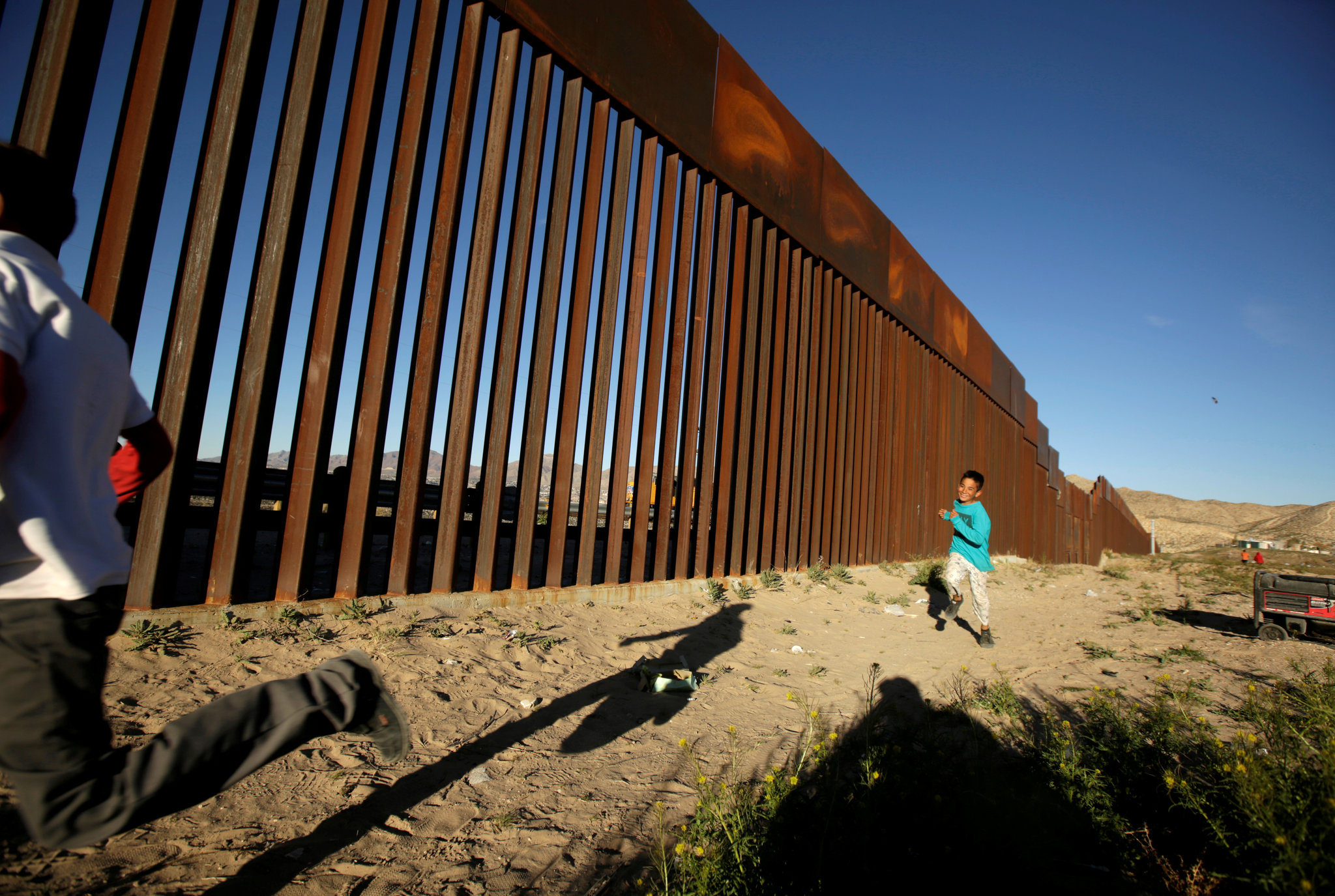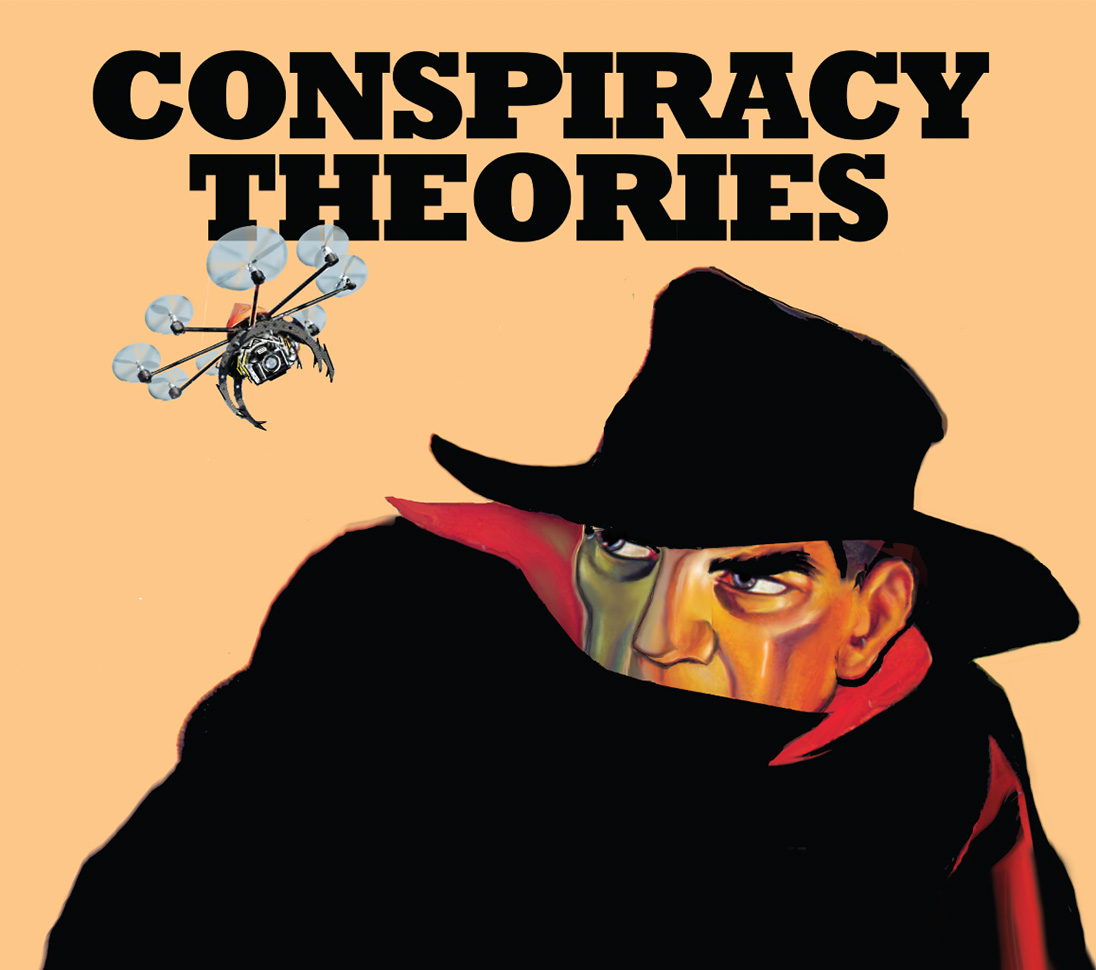Conspiracy theories have existed for centuries, weaving intricate narratives of hidden agendas and secret plots that lurk beneath the surface of reality. These theories often thrive in times of uncertainty and change, offering simple explanations for complex events. In recent years, a particularly potent breed of conspiracy theories has emerged, centered on the relationship between the United States and its southern neighbor, Mexico.
These south-of-the-border conspiracy theories range from the darkly ominous to the downright bizarre. They stoke fears of secret cabals working behind the scenes to undermine the United States, often involving shadowy figures and sinister plots. The spread of these theories has had a significant impact on the political and social landscape, fueling xenophobia, fear, and distrust.
While some conspiracy theories may appear harmless, others can have tangible and far-reaching consequences. The spread of misinformation and false narratives can erode public trust in institutions, sow division, and even incite violence. Hence, understanding the origins, drivers, and impact of south-of-the-border conspiracy theories is crucial for addressing their harmful effects and promoting more informed dialogue.
South of the Border Conspiracy Theories
These theories often thrive in times of uncertainty and change, offering simple explanations for complex events.
- Fear-mongering and Xenophobia
- Spread of Misinformation
- Erosion of Public Trust
- Potential for Violence
The spread of south-of-the-border conspiracy theories has led to tangible and far-reaching consequences, including increased xenophobia, fear, and distrust, as well as the erosion of public trust in institutions.
Fear-mongering and Xenophobia
South-of-the-border conspiracy theories often rely on fear-mongering and xenophobia to gain traction. They portray immigrants, particularly those from Mexico and other Latin American countries, as a threat to American values, jobs, and national security. This fear-mongering rhetoric has contributed to a rise in xenophobia, the fear and hatred of foreigners or strangers.
Conspiracy theories that depict immigrants as criminals, job stealers, or a drain on resources play on people's fears and insecurities. These narratives are often amplified by politicians and media outlets seeking to gain political advantage or boost ratings. The spread of misinformation and the lack of critical thinking skills further exacerbate the problem.
The consequences of fear-mongering and xenophobia are severe. They create a climate of hostility and discrimination, making immigrants and ethnic minorities feel unwelcome and unsafe. This can lead to social unrest, hate crimes, and the erosion of social cohesion.
Moreover, fear-mongering and xenophobia hinder productive dialogue and cooperation on issues related to immigration, border security, and trade. They perpetuate stereotypes and biases, making it difficult to address these complex issues in a rational and humane manner.
It is crucial to challenge fear-mongering and xenophobia by promoting accurate information, fostering critical thinking skills, and encouraging empathy and understanding. A more informed and compassionate society is less susceptible to the allure of conspiracy theories and their harmful consequences.
Spread of Misinformation
South-of-the-border conspiracy theories thrive in an environment of misinformation and disinformation. The internet and social media have made it easier than ever to spread false and misleading information, which can quickly go viral and reach a wide audience.
- Unverified Claims and Rumors:
Conspiracy theories often rely on unverified claims and rumors, which are presented as facts. These claims are often spread through social media, online forums, and even traditional media outlets without proper verification or scrutiny.
- Selective and Biased Information:
Conspiracy theorists often cherry-pick information that supports their claims while ignoring or downplaying evidence that contradicts them. This selective and biased approach to information leads to a distorted and inaccurate understanding of reality.
- Fabricated Stories and Hoaxes:
Some south-of-the-border conspiracy theories are based on entirely fabricated stories or hoaxes. These hoaxes may involve fake news articles, doctored images, or manipulated videos designed to deceive and mislead the public.
- Misinterpretation and Misrepresentation:
In some cases, conspiracy theories arise from the misinterpretation or misrepresentation of legitimate information. This can occur when people lack the critical thinking skills to evaluate information effectively or when they are misled by individuals or groups with an agenda.
The spread of misinformation related to south-of-the-border conspiracy theories has serious consequences. It undermines trust in legitimate sources of information, polarized public opinion, and makes it difficult to have informed and rational discussions about important issues.
Erosion of Public Trust
South-of-the-border conspiracy theories can have a corrosive effect on public trust. When people are exposed to repeated misinformation and fear-mongering, they may begin to lose faith in traditional sources of information, such as the media, government agencies, and academic institutions.
- Distrust of Institutions:
As conspiracy theories spread, people may start to distrust institutions that are seen as part of the alleged conspiracy. This can include government agencies, law enforcement, and even scientific organizations.
- Polarization of Society:
Conspiracy theories often divide society into "us" and "them," creating a sense of polarization and distrust. This can make it difficult to have constructive dialogue and find common ground on important issues.
- Weakened Democracy:
Public trust is essential for the functioning of a healthy democracy. When trust is eroded, it becomes more difficult to govern effectively and address the needs of the people.
- Increased Susceptibility to Authoritarianism:
In societies where public trust is low, people may become more susceptible to authoritarian leaders who promise to restore order and security. This can lead to the erosion of democratic norms and institutions.
The erosion of public trust is a serious threat to society. It undermines the foundations of democracy, makes it difficult to address complex problems, and can lead to instability and conflict.
Potential for Violence
In some cases, south-of-the-border conspiracy theories have the potential to incite violence. When people feel threatened or believe that their way of life is under attack, they may be more likely to engage in violent or aggressive behavior.
- Scapegoating and Hate Crimes:
Conspiracy theories that portray immigrants or other groups as a threat can lead to scapegoating and hate crimes. When people believe that a particular group is responsible for their problems, they may be more likely to target members of that group with violence or discrimination.
- Political Extremism and Terrorism:
Conspiracy theories can also fuel political extremism and terrorism. Some conspiracy theories posit that there is a secret cabal or group working to undermine a particular country or ideology. This can motivate individuals or groups to engage in violence in order to protect their perceived way of life.
- Civil Unrest and Insurrection:
In extreme cases, conspiracy theories can contribute to civil unrest and even insurrection. When large numbers of people believe that their government is illegitimate or corrupt, they may be more likely to engage in protests, riots, or even armed conflict.
- Erosion of Social Cohesion:
The spread of conspiracy theories can also erode social cohesion and make it more difficult to address complex problems. When people distrust each other and believe that they are living in a world controlled by hidden forces, it becomes difficult to build consensus and find common solutions.
The potential for violence associated with south-of-the-border conspiracy theories is a serious concern. It is important to address the spread of misinformation and fear-mongering in order to prevent these theories from causing harm.
FAQ
South of the Border Conspiracy Theories: Frequently Asked Questions
Question 1: What are south-of-the-border conspiracy theories?
Answer: South-of-the-border conspiracy theories are a collection of unfounded and often outlandish beliefs that allege secret plots and hidden agendas involving Mexico and other Latin American countries, typically portraying them as a threat to the United States.
Question 2: Where do these theories originate from?
Answer: These theories can arise from various sources, including historical events, political rhetoric, economic anxieties, and cultural stereotypes. Some originate from legitimate concerns that are distorted and exaggerated, while others are entirely fabricated.
Question 3: What are some common themes in these theories?
Answer: Common themes include the belief that Mexico is trying to invade or undermine the United States, that Mexican immigrants are criminals or a drain on resources, and that there is a secret cabal of Mexican or Latin American leaders working to harm the United States.
Question 4: How do these theories spread?
Answer: South-of-the-border conspiracy theories are spread through various means, including social media, online forums, and traditional media outlets. They often gain traction during times of economic or political uncertainty.
Question 5: What are the consequences of these theories?
Answer: These theories can have harmful consequences, including the erosion of public trust, the spread of misinformation, the rise of xenophobia and discrimination, and even the potential for violence.
Question 6: How can we address these theories?
Answer: Addressing these theories requires a multi-faceted approach that includes promoting critical thinking skills, supporting accurate and balanced reporting, and fostering inclusive and informed dialogue on immigration and related issues.
Closing Paragraph: South-of-the-border conspiracy theories are a serious problem that can have far-reaching consequences. By understanding the origins, drivers, and potential harms of these theories, we can work towards mitigating their impact and promoting a more informed and inclusive society.
While addressing these theories is an ongoing challenge, there are several tips that individuals can follow to protect themselves from misinformation and promote a more informed and inclusive dialogue.
Tips
Navigating South-of-the-Border Conspiracy Theories: Practical Tips
Tip 1: Be Skeptical and Critically Evaluate Information
Details: Always question the source of information, especially if it seems sensational or too good to be true. Look for evidence to support claims and be aware of biases or hidden agendas.
Tip 2: Seek Diverse Perspectives and Engage in Thoughtful Dialogue
Details: Make an effort to seek out and engage with diverse perspectives, including those that challenge your own beliefs. Encourage respectful and informed dialogue to better understand different viewpoints.
Tip 3: Support Accurate and Responsible Journalism
Details: Support reputable news organizations that prioritize fact-checking and responsible reporting. By consuming and sharing accurate information, you can help counter the spread of misinformation.
Tip 4: Promote Inclusive and Informed Conversations
Details: Encourage conversations that focus on shared values and common interests rather than perpetuating stereotypes or division. Promote inclusive dialogue that seeks to understand and address the root causes of issues.
Closing Paragraph: By following these tips, individuals can help combat the spread of misinformation and promote a more informed and inclusive dialogue on south-of-the-border conspiracy theories and related issues.
Addressing south-of-the-border conspiracy theories and their harmful impacts requires a collective effort. By fostering critical thinking skills, promoting accurate information, and engaging in inclusive dialogue, we can work towards a more informed and united society.
Conclusion
South-of-the-border conspiracy theories are a complex and harmful phenomenon that can have far-reaching consequences. These theories thrive in an environment of fear, misinformation, and distrust, and they can lead to xenophobia, the erosion of public trust, and even violence.
To address these theories, it is crucial to promote critical thinking skills, support accurate and responsible journalism, and foster inclusive and informed dialogue. By challenging misinformation and promoting a more informed understanding of the issues at hand, we can work towards a more just and equitable society.
Closing Message: South-of-the-border conspiracy theories are not just harmless speculations; they have real-world consequences that can damage social cohesion, undermine democracy, and perpetuate discrimination. By working together to promote critical thinking, accurate information, and inclusive dialogue, we can build a society where reason and empathy prevail over fear and prejudice.
Margot Robbie's Pink Dress In The Wolf Of Wall Street
Beau Is Afraid: Attic Monster
Fighter Jets Over Florida Today 2024



ncG1vNJzZmicpaK4sHrApqpsZpSetKrAwKWmnJ2Ro8CxrcKeqmebn6J8tLvUrZ9mp5ZiwamxjJumq5yVp3qku82sp6KqkZjGbsDHnqaroZWoe6nAzKU%3D